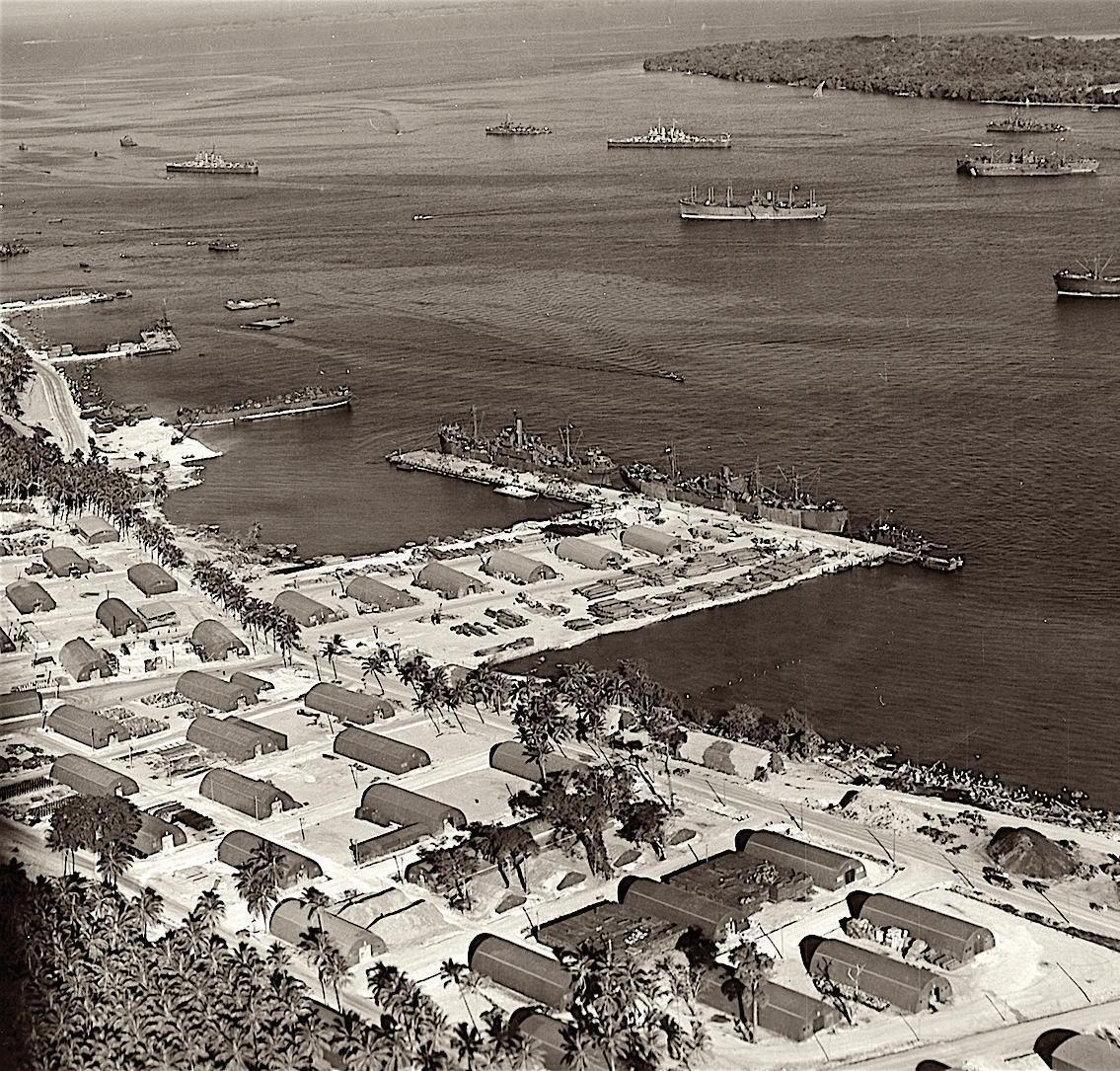






It’s easy to forget the ferocious battles that took place across the Paci c region from 1942 to 1945. Every nation in the region was embroiled in a ght to the death, caught between the giant protagonists, the USA and Japan.
There are the memorials and museums, as well as the scattered relics still hiding in the jungles of New Guinea and the Solomons. The remains of missing soldiers, sailors and airmen are still being found to this day.
Reminders of these desperate times are the airports of PNG, Vanuatu and the Solomons, named after some of the pilots who were among the rst to fall in the early stages of the battle. Henderson Field at Honiara, Gurney at Alotau and Jackson at Port Moresby all commemorate gallant yers killed during the early stages of the Paci c Campaign.
The airport at Port Vila, Vanuatu is named Bauer eld in memory of the US Marine Corps (USMC) ace pilot, Lieutenant Colonel Harold W. Bauer. It’s worth remembering too that these decorated airmen, unlike the wizened old commanders such as MacArthur, Halsey and Nimitz, were young men in their prime, leading from the front and killed in the line of duty.
Harold Bauer was born in Kansas in 1908, joined the Naval Academy in 1926 and graduated in 1930. He was well liked by his peers, a natural and charismatic leader as well as a keen sportsman playing both basketball and lacrosse. He transferred to the Air Academy where he earned his wings in 1936. At the outbreak of WWII, Bauer and his unit, VMF221, were still on their way to Hawaii. By the time of the Guadalcanal landings in August 1942, Bauer was married with
a young son and had attained the rank of major. Nicknamed ‘Indian Joe’, he kept a diary throughout his time in the Marines writing poignant observations for both his wife and son.
“It was no picnic saying goodbye to the wife and kid feeling all the time that I might very readily never see them again,” he wrote as his unit was preparing to leave the serenity of California for Hawaii and New Caledonia where he would face the enemy in bitter combat.
He was on his way to Wake Island when he got the news that it was about to fall to the Japanese invaders. “I felt very sorry for the Marines at Wake and wanted to go to their aid but at the same time, I could see the futility of it all. Wake would fall to the Japs whenever they wanted to make the necessary effort.”
A week after the surprise attack on Pearl Harbor, Bauer arrived in Hawaii and saw the destruction for himself. “We pulled into Pearl Harbor about 16 Dec. and saw the sight of our lives. We were stunned at the severity of the damage accomplished by the Japs. Imagine seeing 6 or 8 Battleships either capsized or sitting neatly on the bottom of the harbor, 2 or 3 cruisers in the same x, destroyers and other ships destroyed, hangars burned, and airplane remains littered about like a junk heap.”
With the fall of Wake Island after a valiant defence, on December 23, Bauer was moved to Midway and spent the early months of 1942 forming new combat squadrons for the Marines in preparation for the erce battles ahead. He was still occupied with these tasks at Noumea and on the New





“For extraordinary heroism and conspicuous courage as Squadron Commander of Marine Fighting Squadron two twelve in the South Paci c Area during the period May 10 to November 14, 1942. Volunteering to pilot a ghter plane in defense of our positions on Guadalcanal, Solomon Islands, Lieutenant Colonel Bauer participated in two air battles against enemy bombers and ghters outnumbering our force more than two-to-one, boldly engaged the enemy and destroyed one Japanese bomber in the engagement of September 28 and shot down four enemy ghter planes in ames on October 3 leaving a fth smoking badly. After successfully leading twenty-six planes in the over-water ferry ight of more than six hundred miles on October 16, Lieutenant Colonel Bauer, while circling to land, sighted a squadron of enemy planes attacking the USS McFarland. Undaunted by the formidable opposition and with valor above and beyond the call of duty, he engaged the entire squadron and, although alone and his fuel supply nearly exhausted, fought his plane so brilliantly that four of the Japanese planes were destroyed before he was forced down by lack of fuel. His intrepid ghting spirit and distinctive ability as leader and an airman, exempli ed in his splendid record of combat achievement, were vital in the successful operations in the South Paci c Area.”
Things were clearly getting frantic about this time and Bauer’s last diary entry was made on October 13. On the following day, he and his men were ferrying new planes in from the huge base on Santo (Codename ‘Buttons’) nearly 1000km away. When they arrived a raid was in progress but the aircraft were all almost out of fuel after the long ight. Seeing the planes attacking a warship, the destroyer USS McFarland, Bauer immediately engaged the attackers, shooting down four and thus saving the ship from likely destruction.




On November 14, Bauer’s good luck ran out. He had just shot down two enemy aircraft in an attack against incoming Japanese transport ships 160kms from Guadalcanal but was hit by another and forced to bail out into the ocean. His fellow pilots saw him in the water, struggling to get his liferaft out of the sinking plane. Bauer was apparently unhurt and oating safely in his lifejacket as night began to fall. They raced back to base to get an amphibious rescue plane but were delayed by other traf c and could not begin a full search until the morning, by which time no trace of Lieutenant Colonel Bauer was ever found despite intense search efforts. He was just 33.
Bauer was of cially declared dead on January 8, 1946. He earned the Medal of Honor and Purple Heart, posthumously. He is memorialised on the tablets of the missing at Manila American Cemetery. Afterwards, Port Vila Airport on Efaté Island in New Hebrides (Vanuatu) was renamed Bauer eld in his honour.